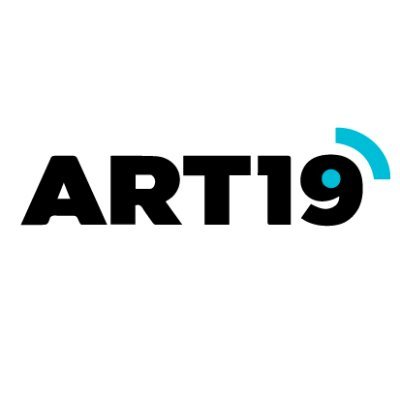Mock sample for your project: Movie Reviews API
Integrate with "Movie Reviews API" from nytimes.com in no time with Mockoon's ready to use mock sample

Movie Reviews API
Version: 2.0.0
Speed up your application development by using "Movie Reviews API" ready-to-use mock sample. Mocking this API will allow you to start working in no time. No more accounts to create, API keys to provision, accesses to configure, unplanned downtime, just work.
It also improves your integration tests' quality and reliability by accounting for random failures, slow response time, etc.
Description
With the Movie Reviews API, you can search New York Times movie reviews by keyword and get lists of NYT Critics' Picks.
Other APIs by nytimes.com

Community API
Get access to comments from registered users on New York Times articles. NOTE: This API is deprecated.

Archive API
The Archive API provides lists of NYT articles by month going back to 1851. You can use it to build your own local database of NYT article metadata.

Article Search API
With the Article Search API, you can search New York Times articles from Sept. 18, 1851 to today, retrieving headlines, abstracts, lead paragraphs, links to associated multimedia and other article metadata.
Note: In URI examples and field names, italics indicate placeholders for variables or values. Brackets [ ] indicate optional items. Parentheses ( ) are not a convention — when URIs include parentheses, interpret them literally.
Note: In URI examples and field names, italics indicate placeholders for variables or values. Brackets [ ] indicate optional items. Parentheses ( ) are not a convention — when URIs include parentheses, interpret them literally.

Top Stories
The Top Stories API provides lists of articles and associated images by section.

Books API
The Books API provides information about book reviews and The New York Times bestsellers lists.

Geographic API
The Geographic API extends the Semantic API, using a linked data approach to enhance location concepts used in The New York Times' controlled vocabulary and data resources which combine them with the GeoNames database, an authoritative and free to use database of global geographical places, names and features.

Semantic API
The Semantic API complements the Articles API. With the Semantic API, you get access to the long list of people, places, organizations and other locations, entities and descriptors that make up the controlled vocabulary used as metadata by The New York Times (sometimes referred to as Times Tags and used for Times Topics pages).
The Semantic API uses concepts which are, by definition, terms in The New York Times controlled vocabulary. Like the way facets are used in the Articles API, concepts are a good way to uncover articles of interest in The New York Times archive, and at the same time, limit the scope and number of those articles. The Semantic API maps to external semantic data resources, in a fashion consistent with the idea of linked data. The Semantic API also provides combination and relationship information to other, similar concepts in The New York Times controlled vocabulary.
The Semantic API uses concepts which are, by definition, terms in The New York Times controlled vocabulary. Like the way facets are used in the Articles API, concepts are a good way to uncover articles of interest in The New York Times archive, and at the same time, limit the scope and number of those articles. The Semantic API maps to external semantic data resources, in a fashion consistent with the idea of linked data. The Semantic API also provides combination and relationship information to other, similar concepts in The New York Times controlled vocabulary.

TimesTags API
With the TimesTags API, you can mine the riches of the New York Times tag set. The TimesTags service matches your query to the controlled vocabularies that fuel NYTimes.com metadata. You supply a string of characters, and the service returns a ranked list of suggested terms.

Times Newswire API
With the Times Newswire API, you can get links and metadata for Times articles and blog posts as soon as they are published on NYTimes.com. The Times Newswire API provides an up-to-the-minute stream of published items.
Other APIs in the same category
Campaign Manager 360 API
Build applications to efficiently manage large or complex trafficking, reporting, and attribution workflows for Campaign Manager 360.
Certificate Manager API

Accelerated Mobile Pages (AMP) URL API
Retrieves the list of AMP URLs (and equivalent AMP Cache URLs) for a given list of public URL(s).
AdMob API
The AdMob API allows publishers to programmatically get information about their AdMob account.

Admin SDK API
Admin SDK lets administrators of enterprise domains to view and manage resources like user, groups etc. It also provides audit and usage reports of domain.

ART19 Content API Documentation
art19.com
The ART19 Content API conforms to the JSON:API specification.
API requests MUST use the HTTP Accept header:
Accept: application/vnd.api+json
API requests MUST be authenticated using the HTTP Authorization header:
Authorization: Token token="your-token", credential="your-credential"
General Notes
Some query parameters use unencoded [ and ] characters simply for readability. Defaults, examples, and
possible values are additionally rendered in double quotes for readability. In practice, query parameters should
not have quotes around the values (e.g., foo=bar is valid, not foo="bar"), and both query parameter keys
and values must be percent-encoded, per the requirements in RFC 3986 § 3.4.
Rate Limiting
In order to provide a fair distribution of available resources, all API calls are subject to rate limits.
If you exceed the number of API calls per minute granted to your credential, a 429 Too Many Requests
error response will be returned.
In that case, a Retry-After header MAY be included in the response, describing the number of seconds
after which a request can be retried.
If you run into a high number of 429 errors, please reach out to ART19 Support to adjust your rate limit.
Example
In the following example the request can be retried after waiting for 21 seconds:
HTTP/1.1 429 Too Many Requests
Content-Type: text/html
Retry-After: 21
Pagination
Requests to collection endpoints SHOULD provide pagination parameters.
Some endpoints REQUIRE pagination parameters to be provided.
Whenever pagination is provided, it MUST be valid.
Failing to provide pagination when it is required or providing wrong or incomplete pagination
always results in a 400 Bad Request error response.
The page numbering starts with 1 and the maximum page size (if not otherwise documented
on an endpoint) is 100. Pagination MUST NOT be specified if requesting a list of IDs (using an ids[] parameter).
Providing invalid values for page number or page size, as well as providing only a page number or only a page size,
is considered an error. Pagination is provided like this:
page[number]=1&page[size]=25
Responses conform to the JSON:API specification's pagination section
by including pagination links. Your requested page size will be carried into the pagination links.
Sorting
Requests to collection endpoints usually accept a sort parameter. Please refer to the
JSON:API Specification's sorting section for further details.
Relationship Linking
Currently, resources return all of their relationships, in no particular order, pursuant to how relationships
should be returned according to the JSON:API specification. Consumers of this API
MUST NOT make assumptions about the order of these collections. Even though this data is not currently paginated, consumers MUST support
paginating relationships per the JSON:API specification if this data is important for their application.
API requests MUST use the HTTP Accept header:
Accept: application/vnd.api+json
API requests MUST be authenticated using the HTTP Authorization header:
Authorization: Token token="your-token", credential="your-credential"
General Notes
Some query parameters use unencoded [ and ] characters simply for readability. Defaults, examples, and
possible values are additionally rendered in double quotes for readability. In practice, query parameters should
not have quotes around the values (e.g., foo=bar is valid, not foo="bar"), and both query parameter keys
and values must be percent-encoded, per the requirements in RFC 3986 § 3.4.
Rate Limiting
In order to provide a fair distribution of available resources, all API calls are subject to rate limits.
If you exceed the number of API calls per minute granted to your credential, a 429 Too Many Requests
error response will be returned.
In that case, a Retry-After header MAY be included in the response, describing the number of seconds
after which a request can be retried.
If you run into a high number of 429 errors, please reach out to ART19 Support to adjust your rate limit.
Example
In the following example the request can be retried after waiting for 21 seconds:
HTTP/1.1 429 Too Many Requests
Content-Type: text/html
Retry-After: 21
Pagination
Requests to collection endpoints SHOULD provide pagination parameters.
Some endpoints REQUIRE pagination parameters to be provided.
Whenever pagination is provided, it MUST be valid.
Failing to provide pagination when it is required or providing wrong or incomplete pagination
always results in a 400 Bad Request error response.
The page numbering starts with 1 and the maximum page size (if not otherwise documented
on an endpoint) is 100. Pagination MUST NOT be specified if requesting a list of IDs (using an ids[] parameter).
Providing invalid values for page number or page size, as well as providing only a page number or only a page size,
is considered an error. Pagination is provided like this:
page[number]=1&page[size]=25
Responses conform to the JSON:API specification's pagination section
by including pagination links. Your requested page size will be carried into the pagination links.
Sorting
Requests to collection endpoints usually accept a sort parameter. Please refer to the
JSON:API Specification's sorting section for further details.
Relationship Linking
Currently, resources return all of their relationships, in no particular order, pursuant to how relationships
should be returned according to the JSON:API specification. Consumers of this API
MUST NOT make assumptions about the order of these collections. Even though this data is not currently paginated, consumers MUST support
paginating relationships per the JSON:API specification if this data is important for their application.
Channel 4 API
This is the place to come for all the technical details you need to power your applications with Channel 4's deep programmes data.

Android Device Provisioning Partner API
Automates Android zero-touch enrollment for device resellers, customers, and EMMs.

